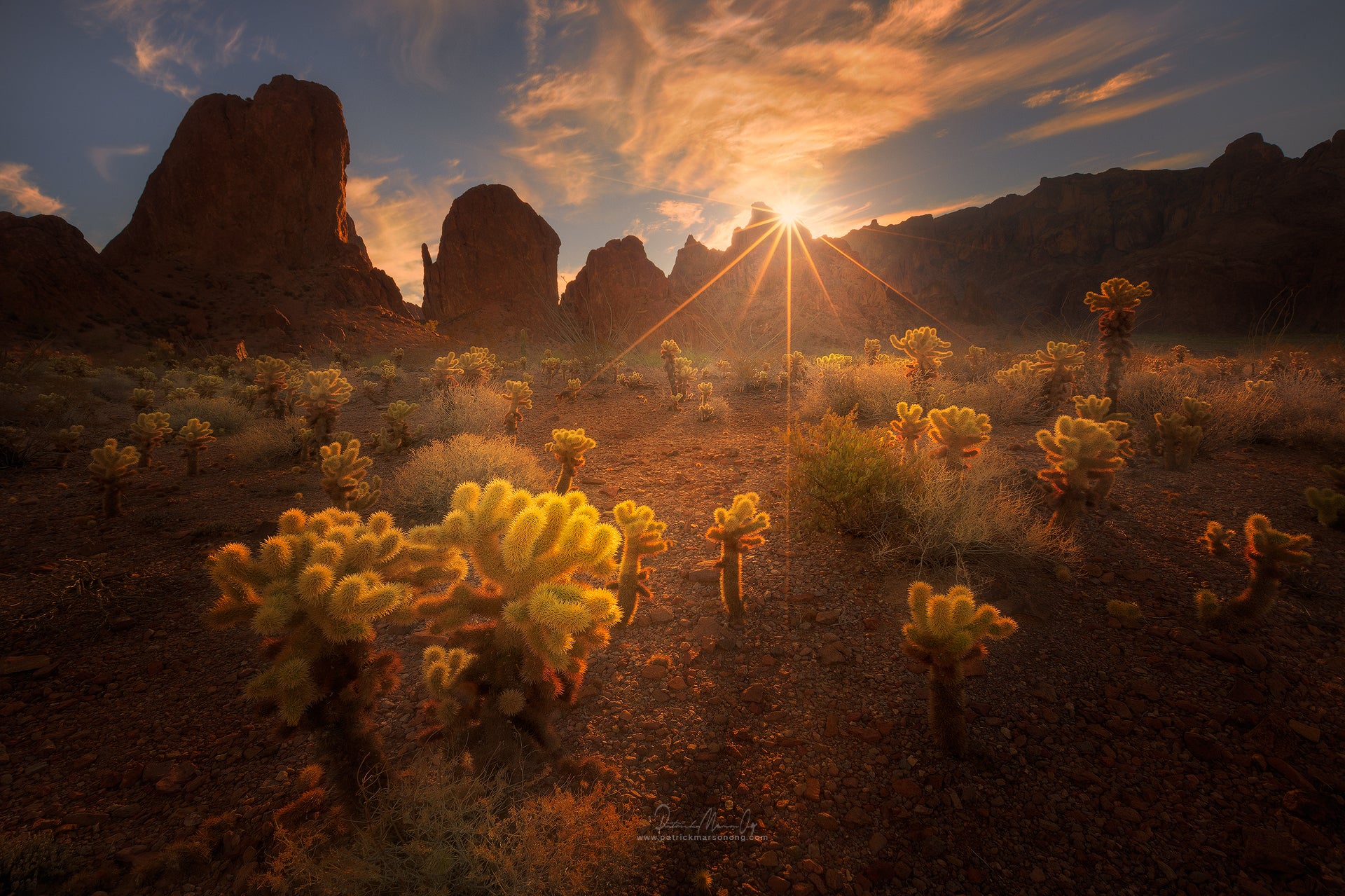
I want you to think of your favourite photograph. It can be one that you’ve taken or one that you’ve seen elsewhere. Picture it in your mind for just a moment. Got it? Good. Now, carefully identify what you like about the photo. What in particular makes it jump out and grab you? Is it the light, the subject matter?
- Explore these Photography Tutorials
- Discover this Ultimate Guide to Composition in Photography
More often than not, the reasons why certain photographs resonate so strongly with us is because all the elements in the frame seem to be assembled “just right” . There exists a certain harmony; a balance. Some photos seem to strike a chord within our very soul.
As photographers, reaching this resonant balance through arrangement of all the pieces of the photographic puzzle can quite often make or break the images we show to the world.
Composition and the “Rule” of Thirds
The manner by which we compose our photographs is incredibly important to the overall visual impact our images have on those who view them. In a way, it can be incredibly difficult to verbalise what makes up a strong composition.
Sometimes, a certain photograph (or any art) just moves us. We like it, even though we might not always understand why. The opposite can also be true. A poorly composed photo might leave us feeling flat. I’ve always said that there are no “bad photographs...only better photographs”. In short, we instinctively know a well composed image when we see one. By the same measure, we can also sense a poorly executed photo just as easily.
There are many ways that we can help strengthen the composition of our photographs. Whilst there are no ironclad rules for constructing our photographs, there are some tried and true methods that we can implement which can at least stack the aesthetic odds in our favour.
 There is something about the composition of this photograph that makes it jump out at us. What could it be? Photo by: 'Iurie Belegurschi'.
There is something about the composition of this photograph that makes it jump out at us. What could it be? Photo by: 'Iurie Belegurschi'.
One of the most well known and easily employed methods we have for making more interesting photos is the “Rule of Thirds”.
Now, before we go any further let’s take a second to make it inescapably clear that the Rule of Thirds is not an actual rule in the sense of what we normally think of rules; as in “there is one way and one way only to do this”. Instead, simply think of the Rule of Thirds as a kindhearted buddy – a soft spoken friend who gently suggests a better route to take.
When we apply the Rule of Thirds to our compositions, we must approach it with the attitude that it is only a guideline to help us better express our own creativity.
Basic Anatomy of Thirds
Understanding the Rule of Thirds doesn’t take much effort at all. Much like its name suggests, we compose our photos based on an imaginary grid which divides our image roughly into thirds both vertically and horizontally by means of four intersecting lines. These lines in turn create nine separate equally sized blocks. Let me show you what I mean:

Easy enough, right? Here’s where it gets interesting. The concept of the Rule of Thirds implies that we should place important elements of our image on or close to one or more of the points where the four lines intersect. Doing so, it is generally believed, results in a more pleasing photo for the viewer.

Along these same lines (Rule of Thirds humour), this reasoning is also behind the commonly used practice of placing the horizon line of our landscape photos either in the upper or lower third portion of the frame. More on that in just a moment.
Let’s take a look at a couple of examples. The first photo pays no heed to composing based on the Rule of Thirds.

Next, let’s look at that same photo after it has been arranged based on the concept of thirds.

Which photo do you find more visually pleasing? It’s alright, we all know….
Now that you’ve got an idea of what the Rule of Thirds is and how it works, let’s get down to business and learn how you can put this super easy photography technique to immediate use in order to help you make better photos.
Using the Rule of Thirds In-Camera
The basic concept of the Rule of Thirds is easy enough and you can use it to compose your images with any camera, with any scene, regardless of its vertical or horizontal orientation. That being said, the wonderful world of digital photography makes using the Rule of Thirds even easier.
Many camera manufacturers have recognised the benefits of composing using the notion of thirds and have built handy grid guides right into most of their digital camera bodies.

How great is that?!
Oftentimes, the Rule of Thirds grid function will be available somewhere in the menu options of your digital camera. Just do a little digging and you’ll likely find the option hiding deep within your camera functions.
Of course, when in doubt, always refer to the user’s manual for your camera to find out if your particular model has this feature and how to enable it in the menu.

Once you’ve got the grid overlay enabled, it becomes virtually effortless to compose your shots based around the Rule of Thirds. Again, simply place the areas of your scene where you want the viewer’s attention directed to the most on (as close as you can) the points where the lines intersect.
This is especially useful for composing your landscapes. We mentioned earlier that it’s usually a good practice to position the main horizon line either in the upper or lower third of the frame rather than at its centre. Having a static display of the Rule of Thirds grid right in front of you can help out immensely for placing those horizons in their best possible location for your particular photo.

Not only that, those grid lines are also a great tool for aiding in horizontal and vertical levelling of your shot.
Using the Rule of Thirds in Post-Processing
As with any other aspect of photography it’s always preferable to get as much of your composition as close as possible to your original vision before the shutter button is pressed. Unfortunately, we make our photographs in the real world and in the world, we make mistakes no matter how well we try to execute our photos.
Luckily for us, we can adjust our composition during post-processing in our digital darkrooms. This flexibility gives us another excellent opportunity to make use of the Rule of Thirds…even if we didn’t do so while we were shooting.
As an example, I’ll be using Lightroom Classic CC but the tools found here are available in most of the post-processing software that you’re likely to encounter today. Just like with our cameras, we have the ability to view a Rule of Thirds grid overlay while cropping our images so that we can more precisely tailor our framing.
Here’s another photo that was originally composed without the consideration for thirds.

In Lightroom, first click the crop icon and then select the ‘Tool’ dropdown from the top menu. Navigate to ‘Crop Guide Overlay’ and choose ‘Thirds’. I suggest saving yourself a few mouse clicks by using the keyboard shortcut ‘O’. This shortcut works for both PC and Mac versions of Lightroom Classic CC.

After selecting the ‘Thirds’ grid option Lightroom will instantly apply those four familiar grid lines over our image. Next, we can customise the cropping so that the main elements of the scene better fall into place based on the Rule of Thirds aesthetic.

There, that’s much better.

Be mindful when cropping your photo during post-processing that you don’t zoom in too much on the image. This can cause some fairly detrimental side effects such as pixelation, while also making camera shake and focus issues more apparent.
This is especially true if your plan to print your photo at larger sizes. While being able to adjust your composition after the fact adds enormous creative flexibility it can also be a slippery slope if we push it too far.
- See also: Camera & Gear Reviews
The Golden Ratio vs. The Rule of Thirds
We’ve talked about some of the fantastic ways that making use of the Rule of Thirds can help you produce better pictures. While it’s true that the Rule of Thirds is a great compositional tool, it’s also a good idea to mention what it’s not; namely, the Rule of Thirds is NOT the same as the “Golden Ratio”.
There is often a misconception that the two are somehow related and understandably so, as the Golden Ratio can be employed for photographic composition much like the Rule of Thirds. However, that is as far as the similarities go. Let’s take an incredibly brief look at the difference between the Rule of Thirds and the Golden Ratio.
Golden Ratio
The Golden Ratio, also referred to as the “Golden Section” or “Golden Mean”, is a hauntingly beautiful mathematical concept that can be found everywhere from legendary works of art (looking at you Da Vinci) and in architecture both modern and ancient. It’s even been identified in the wonderfully complex mechanisms of the Universe and nature, including the very fabric of our own bodies.
It describes a proportion of size based around the approximate sum of 1.62. That number is an abbreviated approximation due to the fact that it continues out as many decimal places as you can or can’t imagine.
In practice, the Golden Ratio can be used to produce a shape known as a “Golden Rectangle”.

This rectangle can then be used to birth a basic four line grid which can be employed as a compositional aid in photography. The Golden Ratio relates explicitly to our purposes here today because it can be found hiding in the same ‘Crop Guide Overlay’ section in Lightroom where we found the ‘Thirds’ grid guide.
Here it is again, in case you missed it earlier.

You’ll notice that it looks decidedly different than the Rule of Thirds grid, because the intersecting lines are dependant on the proportions derived from the Golden Ratio itself.

There is even a ‘Golden Spiral’ grid overlay available in Lightroom but that will cause us to stray too far off the grid (I can’t stop myself) from learning about the Rule of Thirds.
All this withstanding, the Golden Ratio grid can be used in the exact same manner as the Rule of Thirds grid by placing the areas of interest at the line intersections.
Keep in mind, though, that a true Golden Ratio composition is NOT analogous to a composition guided by the Rule of Thirds. Any rectangular or square-shaped composition can be divided into nine equal sections and thusly produce a framing guide based on thirds. This is not the case with the Golden Ratio.
Final Thoughts on the Rule of Thirds
In a world where it seems everyone has a brand new way to help you make better photos, it’s comforting to know that some of the most basic and well-worn techniques can still produce the best results.
When it comes to composing better photographs, there is perhaps no more straightforward method than making use of the Rule of Thirds... even if it’s not a true “rule”. Simply divide your composition using four equally spaced lines and position the important elements of the scene where those lines meet. It really is that simple.
The Rule of Thirds transcends all genres of photography, all subject matter, and can be employed both before and after the moment of capture. Remember to check your camera and post processing software because chances are the Rule of Thirds has been hiding there, just waiting to help you make stronger and more interesting photos. After a little practice using compositional guides like the Rule of Thirds, lining up a fantastic composition when you're in-field will become like a second nature.
About the author: Adam Welch is an adventurer, photographer and author based in the USA. You can find more of his work on his website or by following him on Facebook and YouTube.
Practice your compositional skills in-field in Iceland! Join us on an 11 Day Northern Lights Photo Workshop around Iceland. Our expert photography guides will be on-hand to take you to some of the most spectacular locations for photography as you develop your skills and immerse yourself in nature.











